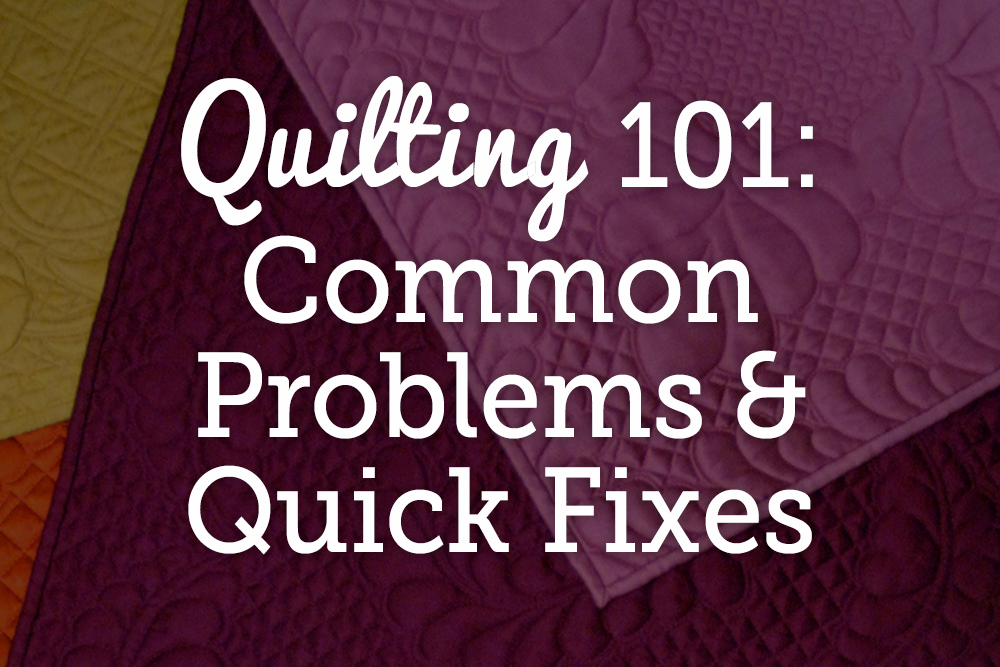
Not all quilters are created equally. Everyone has their own unique personality and style, and this shines through with every quilted creation. There are however some common problems all quilters face at one point or another. If you are a beginner quilter, or even a more experienced quilter looking for a handy tip or two, read on to learn about some of the common problems quilters may face and the quick and easy ways to fix them.

Related video: Tips for Determining Quilt Measurements

Related blog: An Ode to Blue Haired Quilters

Related blog: Keep Your Thread Long and Strong

Related video: How to Hang a Quilt on a Wall

Related video: Choosing the Right Quilting Thread
Armed with a few quick fixes, you’ll be well on your way to tackling those annoying and sometimes frustrating problems that quilters often face. We want to hear from you now – what are your best tips for quilting fixes?
 Have something to add? Leave a comment or email editor@nationalquilterscircle.com.
Have something to add? Leave a comment or email editor@nationalquilterscircle.com.
I decided to turn my panel into a lap quilt instead of a wall hanging. Can I make the top/botttom and side borders different widths to get closer to the size I want without messing with the appearance?
Need help attaching cotton eyelet trim to binding. Between or see on top of binding
I'm making a quilt for my little grandaughter and using fleece for the backing. I've nearly finished quilting and disovered I've cut the fleece too short on one edge. Any suggestions how I can remedy this?
I'm more of hand quilting, but I want to give a try to free motion quilting, thanks so much for sharing this post, it helps me to know what to do to avoid these quilting mistakes, hopes it goes well.
How do you improve your cutting skills for quilts
I'm building a Dresden Plate quilt out of my son's baby clothes. The problem is that many of the pieces for the plates had to be cut on the bias (or any way I could capture them). This has resulted in some of my 30 plates (queen size quilt) being too full and I won't be able to sew regular circles out of them because they're large and stretchy-like, even though I ironed interfacing onto the backs of all stretchy/thin pieces beforehand. It's like I could make some of the plates with 16 panels instead of 18 (is that kosher?). I've tried Best Press to no avail. I'm not the first person who has ever made a traditional quilt with baby clothes, right? Some of the plates are perfect, no problem. The ladies at the quilt shop are no help. What do I do?
I used a jelly roll to make a Ribbon Candy Quilt by Doug Leko. I pinned the strips, measured carefully but the rows ended up wonky. Curved upward and the quilt top is not square. What did I do wrong? Is there any way to avoid this again?
I have a problem with my stiches on the reverse of the quilt looping not sure why this is happening
hi i am trying to get to grips with satin stitch,any tips?
What can I do when machine quilting and the machine does not always pickup the bobbin thread. I sew several stitches before I realize it did not pick up. It does pick up after 3-4 stitches.